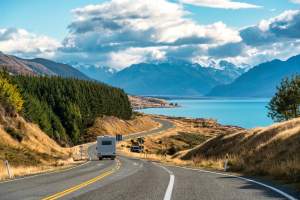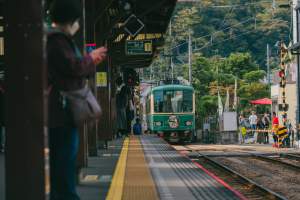
It sounds romantic. Legendary, even. The longest continuous train ride on Earth — over 9,000 kilometers from Moscow to Vladivostok, crossing eight time zones, endless forests, frozen lakes, and remote towns stitched into the seams of Russian history.
You picture snow outside the window, samovars hissing in the corridor, deep philosophical conversations with strangers over vodka and black bread. And yes — some of that happens. But the truth is, riding the Trans-Siberian Railway isn’t a postcard-perfect journey. It’s strange. It’s slow. It’s deeply repetitive. And it’s one of the most unique travel experiences you’ll ever have — if you know what to expect.
Here’s what no one tells you about the Trans-Siberian Railway: the good, the weird, and the in-between. Because this isn’t just a train ride. It’s an odyssey.
First: What Exactly Is the Trans-Siberian Railway?
It’s not one train. It’s a route — a massive, stitched-together network of tracks stretching across Russia (and sometimes Mongolia and China), originally built in the late 19th and early 20th centuries.
There are multiple versions of the journey:
- Classic Route: Moscow to Vladivostok (Trans-Siberian proper)
- Trans-Mongolian: Moscow to Beijing via Ulaanbaatar
- Trans-Manchurian: Moscow to Beijing via Harbin (skipping Mongolia)
Trains can take anywhere from 6 to 14 days, depending on stops and routes. You can ride straight through — or you can hop off along the way (if your visa and ticket structure allow).
The Illusion of Constant Scenery
People expect dramatic views — and you do get them. But here’s the truth: a lot of it looks the same.
- Endless birch forests
- Frozen rivers
- Industrial towns that flash by and disappear
- Occasional distant mountain ridges
- Vast, flat nothingness
It’s hypnotic more than cinematic. Days blur together in a loop of trees, snow, smoke, and sky. But the repetition becomes meditative. You stop looking for change. You settle into rhythm.
The Train Itself: More Village Than Vehicle
The Trans-Siberian is not a bullet train. It’s a moving ecosystem. People live on this train — for days. There are no seatbelts. No announcements in English. Just life in motion.
Class breakdown:
- First class (SV): Two beds per cabin. Private. Quiet. Expensive.
- Second class (Kupe): Four beds per cabin. Lockable door. Shared with strangers. Most balanced.
- Third class (Platskart): Open-plan dormitory. No doors. No privacy. Cheap. Social.
Most travelers go Kupe or Platskart. The latter is chaotic and wonderful — loud, crowded, full of life. Babies cry. Someone’s snoring. A babushka offers you cucumbers. A student plays guitar badly. It’s not Instagram. It’s real.
The Rhythm of the Ride
Days on the train aren’t measured in hours. They’re measured in:
- Meals — instant noodles, black bread, sausage
- Stops — 5-minute dashes to stretch your legs or buy pierogi from trackside vendors
- Conversations — if you’re lucky, with someone who speaks enough English (or if you speak some Russian)
- Tea — always tea, poured from the samovar at the end of each carriage
- Staring out the window — for hours, with nothing else to do and nowhere else to be
There’s no Wi-Fi. Sometimes no cell signal. Your sense of time will go strange. And that’s kind of the point.
What No One Warns You About
1. Time zones stop mattering.
The train runs on Moscow time, even when you’re deep in Siberia. Local time outside the train might be 3 AM — but onboard, it’s dinnertime. Your phone says one thing. The train schedule says another. Eventually, you stop caring what time it is.
2. The toilets lock during long stops.
Plan accordingly. When the train pulls into a major station, the toilets shut — sometimes for 20+ minutes. No warning. No mercy.
3. You’ll smell like train.
No showers. Maybe a sink and cold water if you’re lucky. You sponge off. You rewear socks. You embrace the funk.
4. Food gets weird.
The restaurant car is expensive and often mediocre. You’ll survive on grocery store rations and kindness. Think: salami, bread, pickles, instant soup, candy bars, and hot tea from your own mug.
5. You might cry.
Out of boredom. Out of joy. Out of the strange emotional fog that sets in after day five, when your identity feels like it’s slipping through the cracks of motion and stillness.
The People Make It
What makes this journey unforgettable isn’t the scenery. It’s the strangers.
You might share a cabin with:
- A quiet grandmother who knits for hours and then shares her lunch
- A group of army conscripts heading east
- An off-duty train worker who insists on pouring you vodka
- A solo traveler like you, chasing something they can’t name
Language barriers are real. But smiles, gestures, shared snacks — they get you surprisingly far. If you’re open, you’ll connect.
What to Pack (and What Not To)
Must-haves:
- Instant coffee, tea bags, and snacks
- A metal mug and spoon
- Flip-flops (for the grimy bathroom runs)
- Face wipes and dry shampoo
- A good book (or five)
- Headphones (you will need a break from the ambient chaos)
- Patience
Leave behind:
- Fancy clothes
- Expectations
- Any hope of staying on a normal sleep schedule
Should You Ride Straight Through?
Short answer: no.
The best way to experience the Trans-Siberian is to break it up. Stop in:
- Yekaterinburg – where Europe meets Asia
- Novosibirsk – Russia’s third-largest city
- Lake Baikal – crystal-clear water and fresh air to detox from train funk
- Ulan-Ude – Buddhist Russia, a curveball in cultural expectations
- Vladivostok – Pacific port city that feels more like Korea than Moscow
Each stop resets your brain. And after a few days, you’ll crave solid ground and something freshly cooked.
Who This Trip Is Really For
The Trans-Siberian is not for the impatient. Not for those who need Wi-Fi, structure, or entertainment. It’s for people who want to be — to sit with slowness, discomfort, and beauty that doesn’t perform for you.
It’s for travelers willing to let go of control, to submit to the journey and come out different — not in a dramatic way, but in the subtle way that only slow travel can provide.
Riding the Trans-Siberian Railway is not about checking off a box. It’s about checking out of the pace and noise of modern life. It’s about watching time stretch and bend. It’s about staring at birch trees until they stop being trees and start being your companions.
No one tells you how much of the journey happens inside you — not outside the window. But if you’re ready for that, this ride gives more than it takes.
You won’t remember the meals. You might not even remember every town. But you’ll remember the rhythm. The hush. The way you started to feel weightless by the end.
And how strange it felt to step off — back into a world that moves far too fast.







